Overcoming the Most Common Challenges of Total Talent Management Solutions
Posted on October 30th, 2019 Read time: 3 minutes

As the needs of companies have evolved to include alternative workers, total talent management solutions have entered the mainstream. By definition, total talent management includes full-time employees, freelancers, temporary workers, agencies, independent contractors, gig workers, and even robots to address ongoing staffing needs.
Traditional hiring is one aspect of total talent management models, but complete reliance on full-time staff is no longer the best HR solution. Because total talent management is a new strategy for many businesses, it’s up to HR professionals to educate staff about the total talent management philosophy.
Common Barriers to Adopting Total Talent Management Solutions
The shift to total talent management will take time — and the road to adoption isn’t without obstacles. Here are some common problems that arise and solutions for how to manage them and ease your company’s transition to a total talent management model.
1. Your organization’s culture isn’t ready. Executive leadership and directorial boards might not be fully open to the idea of entrusting critical work to alternative workers. Also, legal departments might see too many risks involved with hiring. What’s more — and probably most influential — is that employees might feel threatened by alternative workers, believing they’ll interfere with employees’ growth opportunities.
Solution: Help these stakeholders see the value and agility that alternative workforces provide. I know one leader, for example, who hired external counsel to challenge every concern the legal department had regarding co-employment. While I don’t recommend this for everyone, it’s certainly one way to challenge old-school thinking.
2. The tech isn’t available or hasn’t been implemented correctly. To effectively acquire qualified talent from multiple sources, HR needs data that shows workers’ skills, credentials, references, availability, and cost. Because total talent management is a newer solution, the required data technology hasn’t been fully implemented and utilized by businesses.
Solution: There are several technology solutions in the total talent management space, and the list of options continues to grow. New developments in blockchain technology, for instance, will soon revolutionize hiring by providing easily accessible worker data. It might make sense to source alternative talent through a specialized service until the right native solution is available for your company.
3. Adoption rates among hiring managers are low. Experienced hiring managers might have had mixed results with contingent workers in the past. Because of that, some managers might not yet understand that the modern workforce is changing and many talented individuals prefer freelance work. Their reluctance to embrace the rapidly changing nature of employment is understandable, but it needs to be addressed if the company wants to grow.
Solution: Train hiring managers to understand the various talent sources available and when it’s best to tap them versus traditional employees. You should also help them understand that short-term projects requiring specialized skills often call for highly talented freelancers. That allows regular employees to stay focused on their work.
4. Freelance workers aren’t interested in your company. Have you addressed the previous three internal issues but you’re just not attracting the right contingent talent? Your external recruitment efforts probably haven’t created the right value proposition for freelancers. Remember, they’re valuable to your company, so you need to show that your company values them.
Solution: Studies show that 51% of companies have recruitment plans to engage the alternative workforce. You can do the same by creating a communications campaign geared toward the external talent market. Partner with marketing and HR teams to update employment branding — including alternative workers — in all your content. Provide a value proposition showing what your company provides to alternative workers, like meaningful work and growth opportunities.
Shifting your company toward total talent management models will take time and effort. And there are always significant challenges in adopting newer, more open thinking. But because total talent management provides companies with greater flexibility in multiple areas, the benefits far outweigh the challenges.
Are you interested in learning more about hiring alternative workers? Download our step-by-step guide to the contingent workforce here.
Article written by: Tania Fiero, Chief Human Resources Officer at IES
Tania Fiero, PHR is Chief Human Resources Officer at Innovative Employee Solutions, a leading global Employer of Record in more than 150 countries that specializes in contingent workforce solutions such as outsourced payrolling, independent contractor compliance, and contractor management services. Founded in 1974, IES has grown into one of San Diego’s largest women-owned businesses and has been named one of the city’s “Best Places to Work” for 10 years in a row.
Related Articles
Posted on October 30th, 2019 Read time: 3 minutes

As the needs of companies have evolved to include alternative workers, total talent management solutions have entered the mainstream. By definition, total talent management includes full-time employees, freelancers, temporary workers, agencies, independent contractors, gig workers, and even robots to address ongoing staffing needs.
Traditional hiring is one aspect of total talent management models, but complete reliance on full-time staff is no longer the best HR solution. Because total talent management is a new strategy for many businesses, it’s up to HR professionals to educate staff about the total talent management philosophy.
Common Barriers to Adopting Total Talent Management Solutions
The shift to total talent management will take time — and the road to adoption isn’t without obstacles. Here are some common problems that arise and solutions for how to manage them and ease your company’s transition to a total talent management model.
1. Your organization’s culture isn’t ready. Executive leadership and directorial boards might not be fully open to the idea of entrusting critical work to alternative workers. Also, legal departments might see too many risks involved with hiring. What’s more — and probably most influential — is that employees might feel threatened by alternative workers, believing they’ll interfere with employees’ growth opportunities.
Solution: Help these stakeholders see the value and agility that alternative workforces provide. I know one leader, for example, who hired external counsel to challenge every concern the legal department had regarding co-employment. While I don’t recommend this for everyone, it’s certainly one way to challenge old-school thinking.
2. The tech isn’t available or hasn’t been implemented correctly. To effectively acquire qualified talent from multiple sources, HR needs data that shows workers’ skills, credentials, references, availability, and cost. Because total talent management is a newer solution, the required data technology hasn’t been fully implemented and utilized by businesses.
Solution: There are several technology solutions in the total talent management space, and the list of options continues to grow. New developments in blockchain technology, for instance, will soon revolutionize hiring by providing easily accessible worker data. It might make sense to source alternative talent through a specialized service until the right native solution is available for your company.
3. Adoption rates among hiring managers are low. Experienced hiring managers might have had mixed results with contingent workers in the past. Because of that, some managers might not yet understand that the modern workforce is changing and many talented individuals prefer freelance work. Their reluctance to embrace the rapidly changing nature of employment is understandable, but it needs to be addressed if the company wants to grow.
Solution: Train hiring managers to understand the various talent sources available and when it’s best to tap them versus traditional employees. You should also help them understand that short-term projects requiring specialized skills often call for highly talented freelancers. That allows regular employees to stay focused on their work.
4. Freelance workers aren’t interested in your company. Have you addressed the previous three internal issues but you’re just not attracting the right contingent talent? Your external recruitment efforts probably haven’t created the right value proposition for freelancers. Remember, they’re valuable to your company, so you need to show that your company values them.
Solution: Studies show that 51% of companies have recruitment plans to engage the alternative workforce. You can do the same by creating a communications campaign geared toward the external talent market. Partner with marketing and HR teams to update employment branding — including alternative workers — in all your content. Provide a value proposition showing what your company provides to alternative workers, like meaningful work and growth opportunities.
Shifting your company toward total talent management models will take time and effort. And there are always significant challenges in adopting newer, more open thinking. But because total talent management provides companies with greater flexibility in multiple areas, the benefits far outweigh the challenges.
Are you interested in learning more about hiring alternative workers? Download our step-by-step guide to the contingent workforce here.
Article written by: Tania Fiero, Chief Human Resources Officer at IES
Tania Fiero, PHR is Chief Human Resources Officer at Innovative Employee Solutions, a leading global Employer of Record in more than 150 countries that specializes in contingent workforce solutions such as outsourced payrolling, independent contractor compliance, and contractor management services. Founded in 1974, IES has grown into one of San Diego’s largest women-owned businesses and has been named one of the city’s “Best Places to Work” for 10 years in a row.






